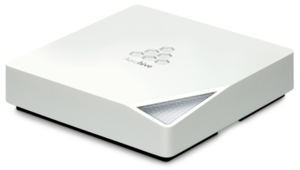Difference between revisions of "Aerohive AP330"
(→Use Tftpboot To Load OpenWrt Into Memory: Basic instructions outline.) |
(Finish load OpenWrt into memory instructions.) |
||
| Line 26: | Line 26: | ||
# ip addr add 192.168.1.101/24 dev eth0 | # ip addr add 192.168.1.101/24 dev eth0 | ||
# systemctl start tftpd | # systemctl start tftpd | ||
| − | # curl ... > /srv/ | + | # curl https://downloads.openwrt.org/snapshots/targets/mpc85xx/p1020/openwrt-mpc85xx-p1020-aerohive_hiveap-330-initramfs-kernel.bin > /srv/tftp/openwrt-mpc85xx-p1020-aerohive_hiveap-330-initramfs-kernel.bin |
| − | ... | + | # curl https://downloads.openwrt.org/snapshots/targets/mpc85xx/p1020/openwrt-mpc85xx-p1020-aerohive_hiveap-330-squashfs-fdt.bin > /srv/tftp/openwrt-mpc85xx-p1020-aerohive_hiveap-330-squashfs-fdt.bin |
| + | # curl https://downloads.openwrt.org/snapshots/targets/mpc85xx/p1020/openwrt-mpc85xx-p1020-aerohive_hiveap-330-squashfs-sysupgrade.bin > /srv/tftp/openwrt-mpc85xx-p1020-aerohive_hiveap-330-squashfs-sysupgrade.bin | ||
</pre> | </pre> | ||
Back in the console of the Aerohive (minicom,) first set the necessary environment variables, then use tftpboot to load the OpenWrt firmware directly into working memory. | Back in the console of the Aerohive (minicom,) first set the necessary environment variables, then use tftpboot to load the OpenWrt firmware directly into working memory. | ||
| Line 37: | Line 38: | ||
=> bootm 0x1000000 - 0x6000000 | => bootm 0x1000000 - 0x6000000 | ||
</pre> | </pre> | ||
| − | + | You should be prompted to press ENTER eventually, and see the familiar OpenWrt splash screen. | |
== Perform The Sysupgrade == | == Perform The Sysupgrade == | ||
Revision as of 13:14, 8 February 2020
Contents
Files
Flashing From The Stock Firmware
Aerohive routers come with a super locked down operating system on them. They're optimized for management via something called the Hive Manager, which is a cloud platform owned by Aerohive. This obviously won't do!
In order to flash OpenWrt, we will need to interrupt the boot-up process using a serial cable and a program called minicom. We will then load OpenWrt directly into RAM, and boot from memory. After booting a temporary copy of OpenWrt in this way, we can run a sysupgrade within OpenWrt to flash OpenWrt onto the hard-drive. This is not as hard as it sounds. Before proceeding, you will want to obtain a console cable, and download minicom.
Interrupt The Boot Process
- Connect your laptop to the Aerohive with a console cable
- launch `minicom` in a terminal
- Connect the Aerohive to power, and quickly press any key to interrupt the boot process
- You should see a prompt starting with
=>
Use Tftpboot To Load OpenWrt Into Memory
There are a couple steps missing from the commit message. Namely, you should assign your 'laptop' a static IP address, and connect it to the Aerohive with an ethernet cable. If you don't know the name of your ethernet interface, run ip link.
# ip addr add 192.168.1.101/24 dev eth0 # systemctl start tftpd # curl https://downloads.openwrt.org/snapshots/targets/mpc85xx/p1020/openwrt-mpc85xx-p1020-aerohive_hiveap-330-initramfs-kernel.bin > /srv/tftp/openwrt-mpc85xx-p1020-aerohive_hiveap-330-initramfs-kernel.bin # curl https://downloads.openwrt.org/snapshots/targets/mpc85xx/p1020/openwrt-mpc85xx-p1020-aerohive_hiveap-330-squashfs-fdt.bin > /srv/tftp/openwrt-mpc85xx-p1020-aerohive_hiveap-330-squashfs-fdt.bin # curl https://downloads.openwrt.org/snapshots/targets/mpc85xx/p1020/openwrt-mpc85xx-p1020-aerohive_hiveap-330-squashfs-sysupgrade.bin > /srv/tftp/openwrt-mpc85xx-p1020-aerohive_hiveap-330-squashfs-sysupgrade.bin
Back in the console of the Aerohive (minicom,) first set the necessary environment variables, then use tftpboot to load the OpenWrt firmware directly into working memory.
=> setenv serverip 192.168.1.101 => setenv ipaddr 192.168.1.1 => tftpboot 0x1000000 192.168.1.101:openwrt-mpc85xx-p1020-aerohive_hiveap-330-initramfs-kernel.bin => tftpboot 0x6000000 192.168.1.101:openwrt-mpc85xx-p1020-aerohive_hiveap-330-squashfs-fdt.bin => bootm 0x1000000 - 0x6000000
You should be prompted to press ENTER eventually, and see the familiar OpenWrt splash screen.
Perform The Sysupgrade
Benchmarks
Clearnet Wireless Traffic
~ 70Mbps
Client connecting to 192.168.1.137, TCP port 5001 with pid 28923 Write buffer size: 128 KByte TCP window size: 246 KByte (default) ------------------------------------------------------------ [ 3] local 192.168.1.204 port 34440 connected with 192.168.1.137 port 5001 (ct=1.75 ms) [ ID] Interval Transfer Bandwidth Write/Err Rtry Cwnd/RTT NetPwr [ 3] 0.0000-10.1140 sec 72.0 MBytes 59.7 Mbits/sec 576/0 0 -1K/3708 us 2013.12
Yggdrasil Wireless Traffic
???
